Three rays of light — red (R), green (G) and blue (B) — are incident on the face AB of a right-angled prism ABC. The refractive indices of the material of the prism for red, green and blue wavelengths are 1.39, 1.44 and 1.47, respectively. Trace the path of the rays through the prism. How will the situation change if these rays were incident normally on one of the faces of an equilateral prism ?

Critical angle for a light ray is given by , or
Critical angle for red ray
Critical angle for green ray
and Critical angle for blue ray
On the basis of above data, the paths of different coloured rays will be as shown below in the Fig. 9.75. Blue and green rays are totally internally reflected from the diagonal face of prism but red rays is refracted. For an equilateral prism [A = 60°] if the light rays were incident normally on one of the face, they will go straight [i.e., i = 0° and = 0°] and strike the second face of prism making an angle = 60° - 0° = 60°. Consequently, all the three rays (of blue, green and red colour) will suffer total internal reflection. So, there will be no transmitted light at all.

Topper's Solved these Questions
- RAY OPTICS AND OPTICAL INSTRUMENTSBOOK - U-LIKE SERIESCHAPTER - RAY OPTICS AND OPTICAL INSTRUMENTSEXERCISE - LONG ANSWER QUESTIONS-II
9 Videos
- RAY OPTICS AND OPTICAL INSTRUMENTSBOOK - U-LIKE SERIESCHAPTER - RAY OPTICS AND OPTICAL INSTRUMENTSEXERCISE - SELF ASSESSMENT TEST (SECTION A)(MULTIPLE CHOICE QUESTIONS)
5 Videos
- RAY OPTICS AND OPTICAL INSTRUMENTSBOOK - U-LIKE SERIESCHAPTER - RAY OPTICS AND OPTICAL INSTRUMENTSEXERCISE - SHORT ANSWER QUESTIONS
54 Videos
- NUCLEIBOOK - U-LIKE SERIESCHAPTER - NUCLEIEXERCISE - Self Assessment Test
10 Videos
- SEMICONDUCTOR ELECTRONICS : MATERIALS, DEVICES AND SIMPLE CIRCUITSBOOK - U-LIKE SERIESCHAPTER - SEMICONDUCTOR ELECTRONICS : MATERIALS, DEVICES AND SIMPLE CIRCUITSEXERCISE - SECTION B
1 Videos
Similar Questions
A beam of light consisting of red, green and blue colours is incident on a right angled prism. The refractive index of the material of the prism for the above red, green and blue wavelengths are 1.39, 1.44 and 1.47, respectively.

View SolutionA beam of light consisting of red, green, and blue colors is incident on a right-angled prism. The refractive indices of the material of the prism for the above red, green and blue wavelengths are 1.39, 1.44 and 1.47, repectively. The prism will
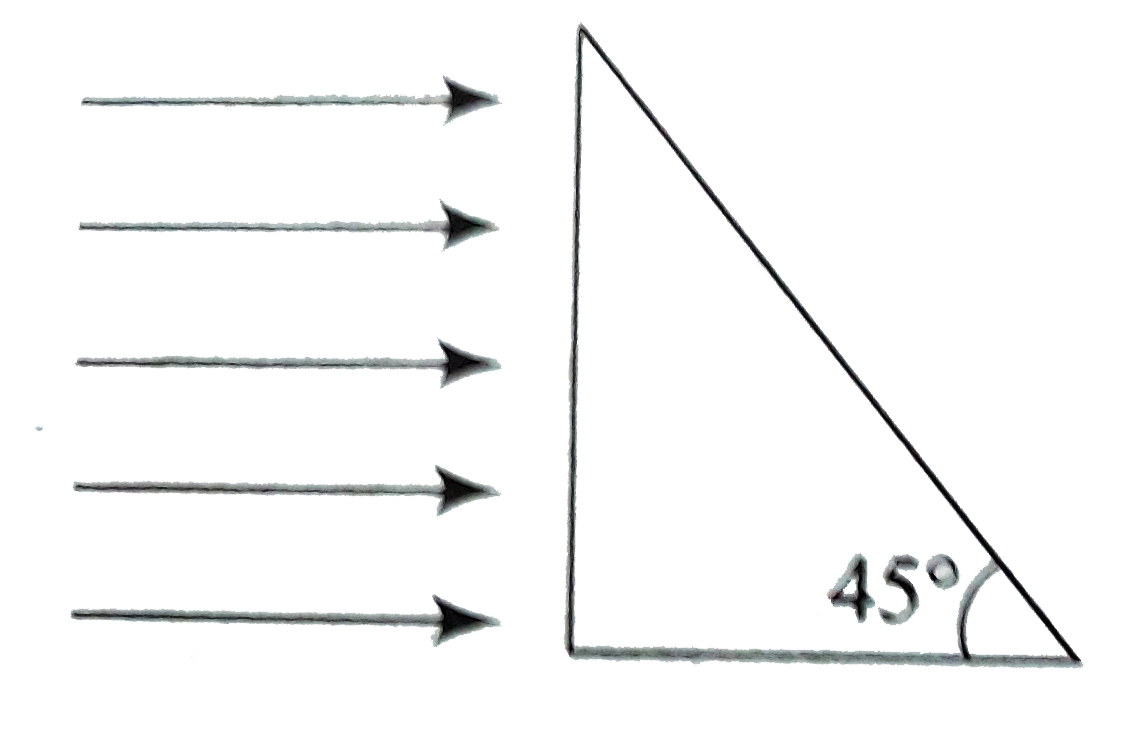
View Solution
Knowledge Check
A beam of light consisting of red, green and blue colours is incident on a right angled prism. The refractive index of the material of the prism for the above red, green and blue wavelengths are 1.39, 1.44 and 1.47, respectively.
 Aseparate the blue colour part from the red and green coloursBseparate all the three colours from one anotherCnot separtate the three colours at allDseparate the red colour part from the green and blue colours
Aseparate the blue colour part from the red and green coloursBseparate all the three colours from one anotherCnot separtate the three colours at allDseparate the red colour part from the green and blue coloursA beam of light consisting of red, green, and blue colors is incident on a right-angled prism. The refractive indices of the material of the prism for the above red, green and blue wavelengths are 1.39, 1.44 and 1.47, repectively. The prism will
 Aseparate part of the red color from the green and blue colorsBseparate part of the blue color from the red and green colorsCseparate all the three colors from one anotherDnot separate even partially any color from the other two colors
Aseparate part of the red color from the green and blue colorsBseparate part of the blue color from the red and green colorsCseparate all the three colors from one anotherDnot separate even partially any color from the other two colorsA beam of light consisting of red, green and blue colours is incident on right angled prism. The refractive indices of the material of the prism for the above red, green and blue wavelengths are 1.39,1.44and1.47 respectively. The prism will.
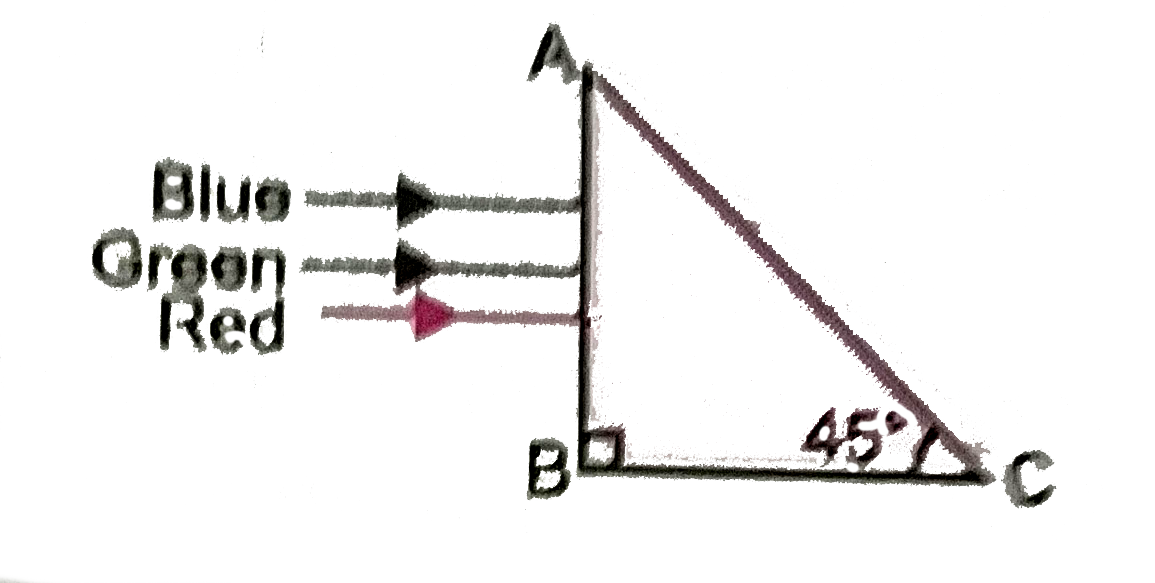 .ASeparate the red colour part from green and blue colours.BSeparate the blue colour part from the red and green colours.CSeparate all the three colours from one another.DNot separate the three colours at all.
.ASeparate the red colour part from green and blue colours.BSeparate the blue colour part from the red and green colours.CSeparate all the three colours from one another.DNot separate the three colours at all.
Three rays of light, namely red (R), green (G) and blue (B) are incident on the face PQ of a right angled prism PQR as showns in the figure.
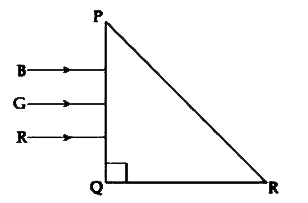
The refractive indices of the material of the prism for red green and blue wavelength are 1.27, 1.42 and 1.49 respectively. The colour of the ray(s) emerging out of the face PR is:
View SolutionThree light rays red (R), green (G) and blue (B) are incident on a right angled prism 'abc' at face 'ab'. The refractive indices of the material of the prism for red, green and blue wavelengths are 1.39 , 1.44 and 1.47 respectively. Out of the time three which colour ray will emerge out of face 'ac' ? Justify your answer. Trace the path of these rays after passing through face 'ab'
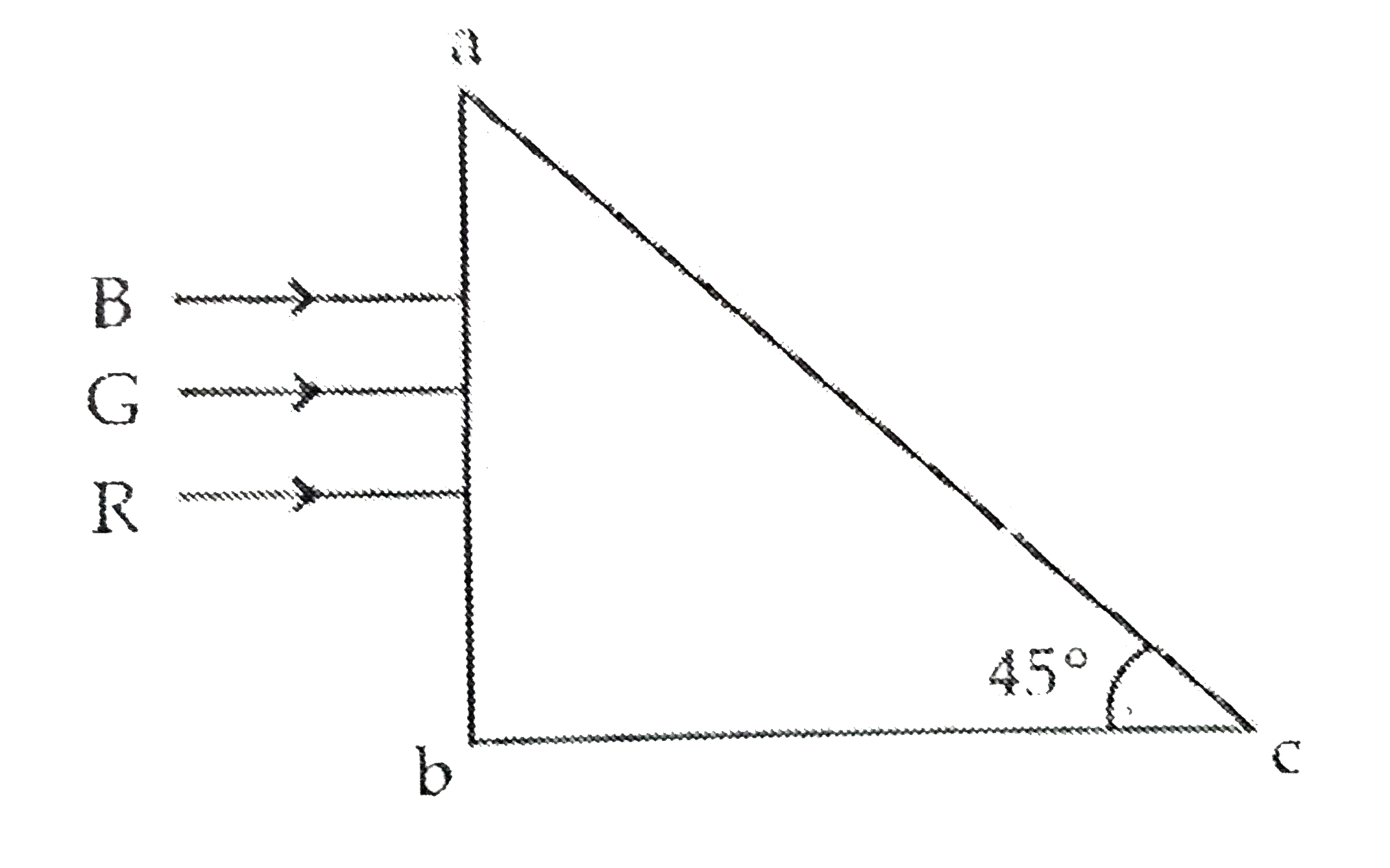
View SolutionThree light rays red (R), green (G) and blue (B) are incident on a right angled prism 'abc' at face 'ab'. The refractive indices of the material of the prism for red, green and blue wavelengths are 1.39 , 1.44 and 1.47 respectively. Out of the time three which colour ray will emerge out of face 'ac' ? Justify your answer. Trace the path of these rays after passing through face 'ab'

View SolutionState the conditions of total internal reflection. Refractive indices of the given prism material for Red, Blue and Green colors are respectively 1.39, 1.48 and 1.42 respectively. Trace the path of rays through the prism.

View SolutionA beam of light consisting of red, green and blue and is incident on a right angled prism. The refractive index of the material of the prism for the above red, green and blue wavelengths are 1.39, 1.44 and 1.47 respectively. The prism will :
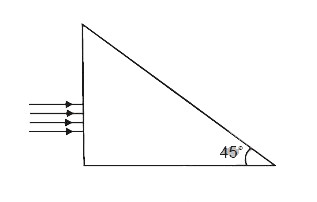
View Solution
